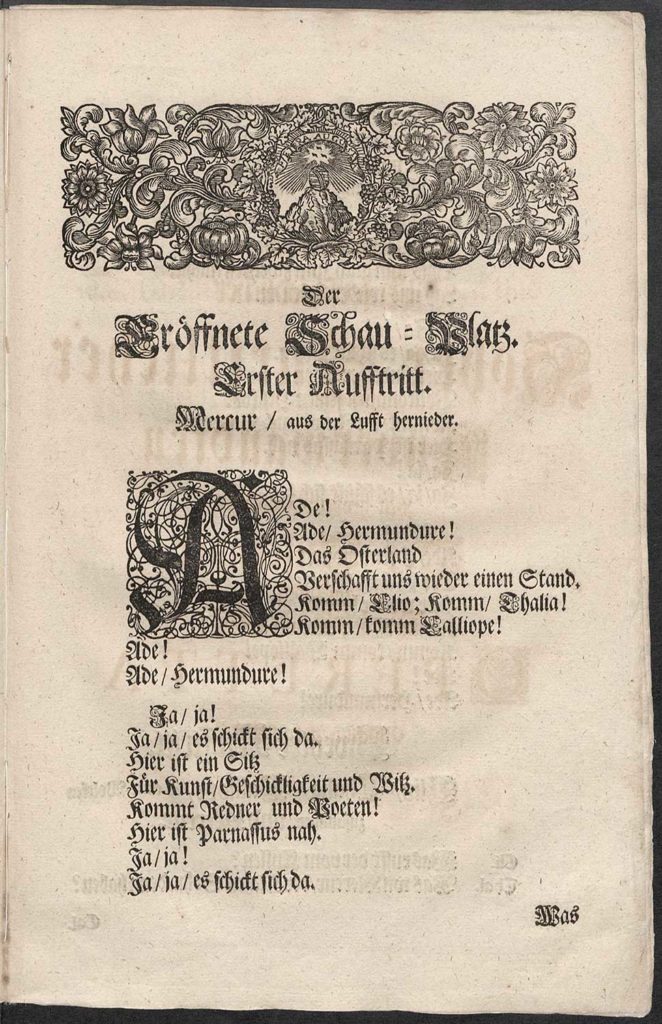On the stage of the ducal opera, performers could be made to disappear through trapdoors or seemingly fly through the air.
The opera house possessed a large number of sets, pieces of scenery, cloth and cardboard props, and theatrical machines. The costume collection was huge.
Professional musicians such as the famous singer Christiane Pauline Kellner (1664–1745) performed there ¬– as did members of the court nobility and the duke’s own children, who took lessons from the dancing master.
Known as the “Komödiensaal” (Comedy Hall), the opera house was opened in 1685 and transformed Wei¬ssenfels into a centre of the arts with a significance far beyond central Germany. It is documented that around 140 theatrical works were performed there, created by important composers such as Johann Philipp Krieger (1649–1725) and Reinhard Keisers (1674–1739). But the actual number is thought to be much higher – at least 400.
